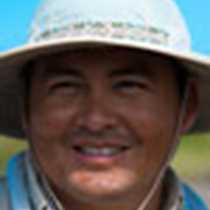We have been enjoying the flora and fauna of the most southern island in the Galapagos archipelago and today it was time to understand how the human population fits into the ecological landscape. With around 20,000 residents, Puerto Ayora is the capital of the Galapagos Islands and its largest town. Norwegians inhabited the island of Santa Cruz in 1926 after they failed to colonize and build a fish-canning factory in Floreana Island.
With great enthusiasm we visited Puerto Ayora, which houses the Galapagos National Park Service headquarters. In our morning outing, we headed to the Fausto Llerena giant tortoise breeding center. In this place, the park service is working hard along with the Charles Darwin Research Station to breed tortoise species that have been affected by overhunting in the 17th century as well by introduced species that are now competing for food with native species. The ultimate goal of the breeding program is to produce and then return these animals to their islands of origin.
Later in the morning we walked back to town and passed by the fishing market where local fishermen showed visitors the different kinds of commercial fish consumed by the community. At the same time other guests were captivated by the behavior of the graceful sea lions, pelicans, herons and frigatebirds begging for a free fish.
Heading by bus to the highlands we appreciated the different vegetation zones. We also made a quick stop at Bellavista village where we learned about sugarcane processing. Beside sugarcane juice and the Andean alcohol, punta, we also tried organic coffee from the Galapagos with cinnamon bread.
After lunch we walked through the densely forested humid zone hoping to find giant tortoises in their natural habitat. We spotted a few of these friendly gigantic animals carving paths through the dense vegetation like war tanks. Also, on our walk we found several bird species that made us fall in love with them through their melodies. Darwin’s tree finches were all over the area. Other species such as the white-cheeked pintail duck, cattle egret, and Galapagos rail were found at the end of the trail in a fresh water pond.
We ended our outstanding day in Puerto Ayora by enjoying delicious homemade ice cream while watching a local game of Ecuadorian volleyball.




